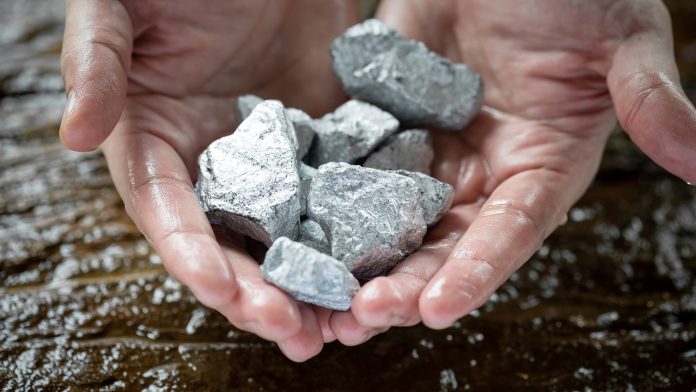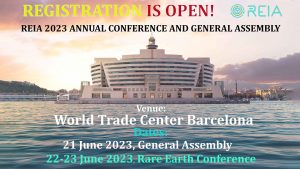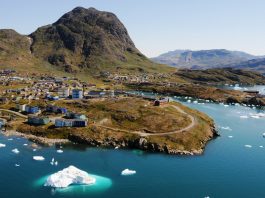Dr Nabeel Mancheri, Secretary General at REIA, discusses the importance of a sustainable global rare earth supply chain and how the EU’s Raw Materials Act will facilitate this.
Rare earth elements (REEs) have become critical enablers of technologies at the heart of clean energy initiatives worldwide, as well as gadgets and electronics that have pervaded modern society.
They are used in small, but often necessary, amounts in hundreds of different technologies, materials, and chemicals worldwide in commercial, industrial, social, medical, and environmental applications.
Due to this growing need, the European Commission recently released the terms for its Raw Materials Act, which aims to establish a framework for a secure and stable supply of critical raw materials, including REEs. The Global Rare Earth Industry Association (REIA), a first-of-its-kind organisation for establishing a global rare earth supply and value chain, contributed several initiatives to this act to facilitate a fair and sustainable future for rare earths.
Innovation News Network spoke to Dr Nabeel Mancheri, REIA’s Secretary General, to outline how supply and demand targets for REEs can be met and discuss the importance of REIA’s contributions to the Raw Materials Act.
Can you briefly outline REIA’s objectives in the current rare earth landscape?
REIA is a global association representing the rare earth stakeholders across the value chain – we have mining and processing companies, magnet manufacturers, and a number of downstream players who use rare earths in their products as members. The basic premise of having a global association is that previously, we did not have a global association to represent the REE stakeholders. Suppose you look at other metals, like copper, aluminium, iron, or steel, they all have global associations working together to increase their respective industry’s transparency, sustainability, information sharing, and data generation. In the last ten years, rare earths have been such an important topic, but we didn’t have any public organisation to provide credible source of information. So this was the main reason for setting up REIA in 2019, with the support of EIT RawMaterials, a European Commission-sponsored organisation.
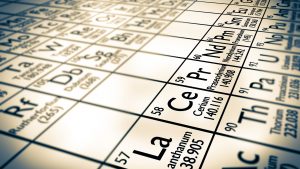
It was actually started as a project, and the primary objective was to develop a sustainable and transparent global rare earth industry, as the media covered a lot of inaccurate and sensational information about the industry. For instance, the media portrayed that rare earth production results in a lot of waste generation, including radioactive materials, with no credible data to back it up. The media also showed how these elements are unsustainably produced and processed in China.
Moreover, in the last 15 years, a new market has emerged with higher demand for magnets, which is essential for electric mobility and wind energy turbines. The increased media presence, domestic protests, and pressure from the Western world have influenced how rare earths are produced and processed, especially in China. As a global association, we have developed a globally accepted standard to assess sustainability and build a science-based tool to capture the environmental impact of rare earth production. The system will play an important role in bridging the information gap between the downstream and upstream.
What role do rare earths play in the clean energy transition?
REEs play such a big role, especially since countries are moving to electrify the transportation sector and legally phase out normal vehicles that use fossil fuels like petrol or diesel. For example, the UK plan to phase out internal combustion engine vehicles by 2030 and the European Union by 2035.
The alternate drive system is based on electric motors. The rare earth-based permanent magnet motors used in cars, buses, and wagons are the most efficient, sustainable, and available for the transportation sector. There are other types of electric motors, but it is proven that they are less efficient than rare-earth-based permanent magnet motors. Also, if you use other kind of motors, you use many other materials like copper, and you have to increase the capacity of the batteries to reach the same efficiency and range, putting additional pressure and cost on the battery materials.
These are the best option for wind energy turbines for clean energy, with almost 90% of the current offshore installations are based on these permanent rare earth magnet motors. Like motors for transport, it is efficient, and maintenance costs are low compared to other types of motors. Even within onshore wind energy sectors, many companies prefer to have rare earth magnet motors or some kind of hybrid system. Rare earths are also essential for digitalisation and electronic and industrial products such as laptops, mobile phones, washing machines, refrigerators, heat pumps, water pumps, industrial robots, and more.
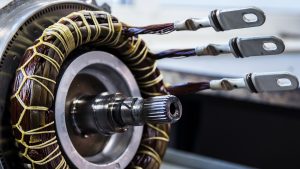
How can countries across the globe keep up with the demand for rare earths?
The demand is actually growing very quickly. So far, 95% of the market is dominated by Asian countries; however, several mining projects are under development in countries like Australia, Canada, and some African countries. For now, the demand and the supply are almost balanced, and if these new projects start operation by the end of this decade, the increasing demand could be met. If not, there will be a problem within the global rare earth market with increased competition and pressure on prices.
Some projects focus on the recycling of end-of-life products, but also recycling what is generated during the production of these magnets, which could also cater partially to the increasing demand.
What are some of the obstacles in the industry, and how can these be overcome?
We need to have a diversified rare earth industry, as having a concentrated market in a single or handful of countries poses a risk to the supply chain. To develop mining projects in western countries, we require deregulation in this sector and also a mechanism for fast permitting, taking the public community along. We are happy that the European Commission specifically addressed this issue in the recently released European Raw Materials Act and has clauses to streamline the permitting process in member states.
Another challenge is the Western world’s lack of an efficient and skilled workforce. In the next ten to 15 years, the whole trained workforce needs to be built up to develop the rare earth value chain outside China.
There are also cost differences between what is produced in countries in Asia or the developing world and what is produced in the Western world. There should be some mechanism to bridge this cost parity.
What was the inspiration behind REIA’s input for the EU Raw Materials Act? Have any of your proposals been implemented?
We specifically submitted a number of concrete proposals to the European Commission by providing input for the Raw Materials Act. For example, we specifically asked for financing for critical raw material projects through the EU’s internal financial mechanisms. Examples include utilising the Just Transition Fund by amending the maximum eligible grant amount per single project and per single NACE code or including EU Sovereignty Fund in the Raw Materials Act as an EU fund that will provide high-CAPEX grants along critical raw materials value chains. Unfortunately, these proposals have not been included in the act. We understand the limitation of the Commission in this regard, as it has to accommodate different national interests, and it is not a single government for the EU 27 nations.
However, we are happy that a number of our proposals did find a place in the Raw Materials Act, such as:
- Identifying a list of Strategic Projects of European Interest nominated by Member States. This list should qualify projects from Member States that do not have the fiscal space to participate in IPCEIs;
- Providing a Public Procurement Premium for domestic supply and ESG; and
- Establish an EU agency that will act as a communication channel between the EU Commission’s shortlist of strategic EU projects and local land use and environmental permitting authorities to identify ways to fast-track approvals.
Another aspect is that recycling could meet at least some of the future EU demand. There are specific rules in the Raw Materials Act, such as 15% of the European demand could be met by recycling these critical materials by 2030. From the industry perspective, we thought this was feasible, and it was included in the Raw Materials Act. However, developing an EU primary rare earth value chain is necessary for an economically viable secondary value chain. Both should go hand in hand.
What does the year ahead look like for REIA?
The European Raw Materials Act also states that whatever product you produce or the material you get must focus on ESG (environmental, social, and governance). REIA’s primary focus is on sustainability, and we have developed a globally accepted standard for assessing the sustainability of rare earth production, from mines to magnets.
We have a project called Circular System for Assessing Rare Earth Sustainability (CSyARES), supported by EIT RawMaterials. As part of this project, we are building an integrated platform that gives companies access to evaluate how rare earths are produced, where they are produced, and the environmental impact of that particular product. This blockchain-based LCA integrated tool enables downstream companies to communicate seamlessly with their supply chain partners across the rare earth value chain. The tool also allows the companies to trace the materials, identify the source of origin, and even identify the recycled contents.
We will demonstrate this tool in our next annual rare earth conference scheduled for 22-23 June in Barcelona, where we had about 200 participants last year, mainly from the big OEMs and Tier 1 companies. The focus of the conference is automotive electrification and energy transition. The conference will bring together key stakeholders from the rare earth sector, drawn from industry, academia, government, and the investment community.

